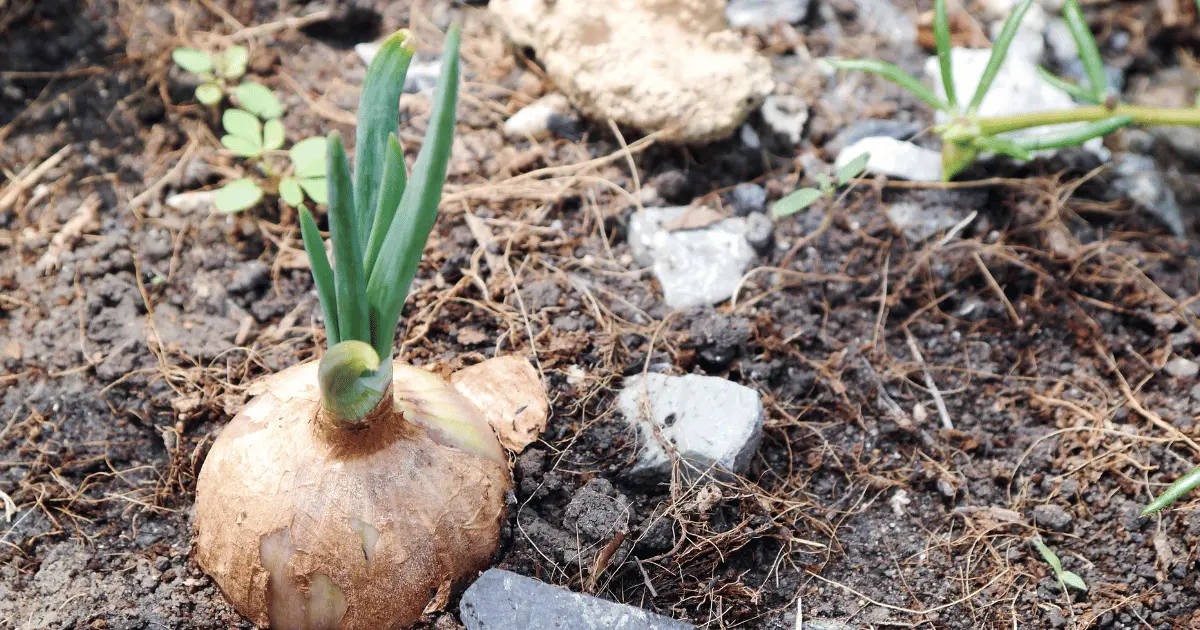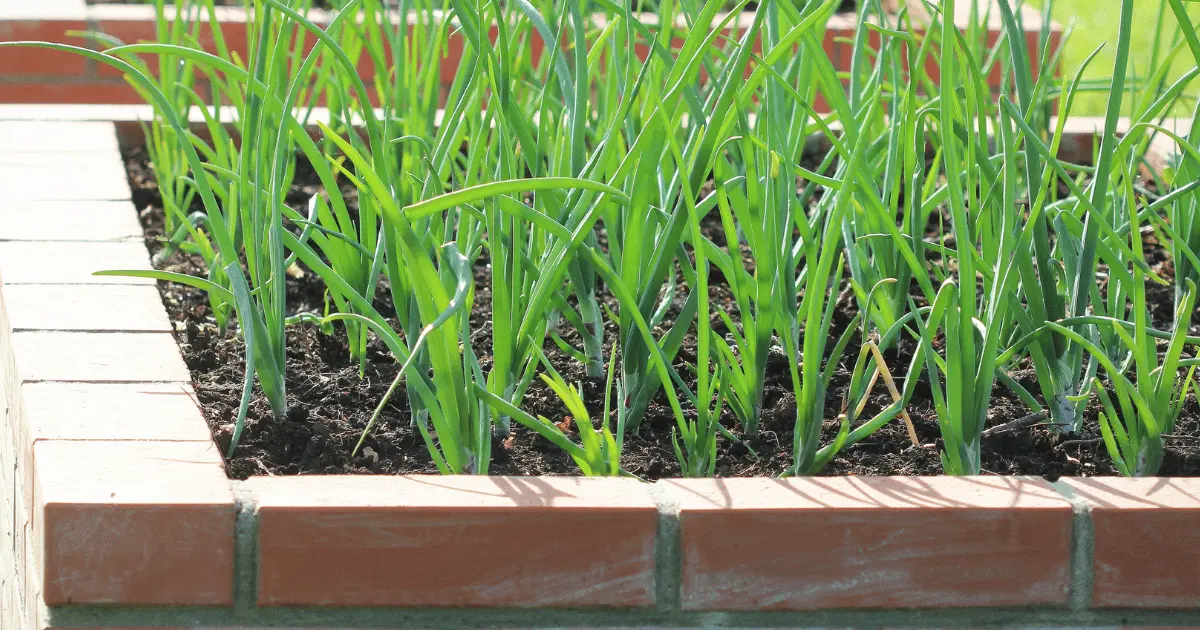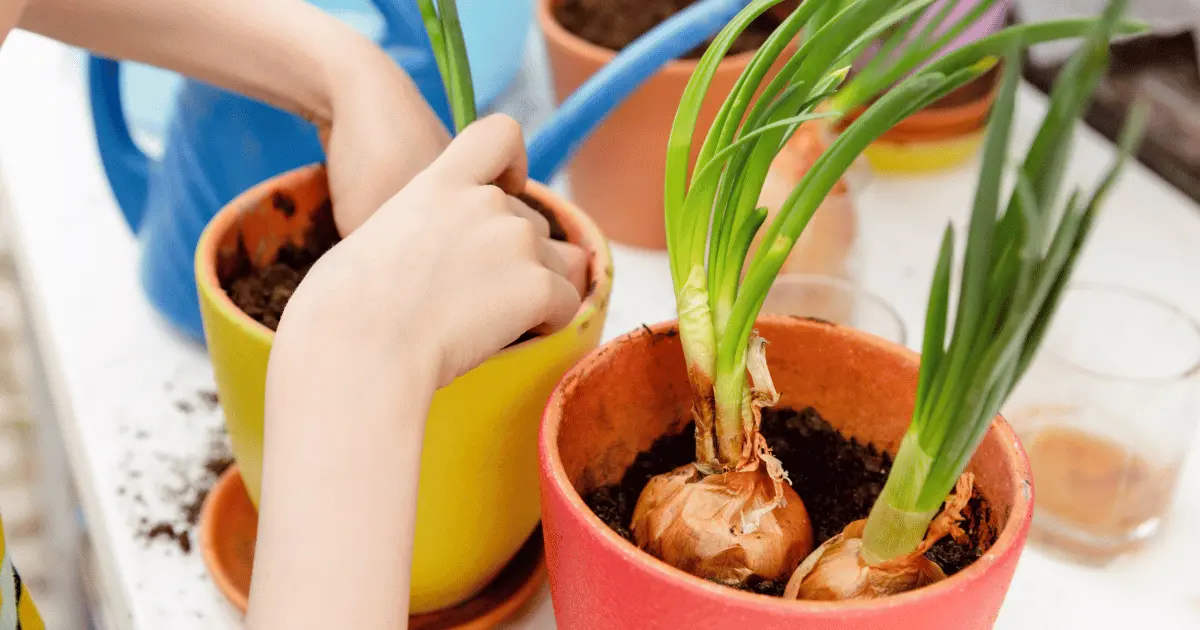Onion is one of the most popular vegetables on the planet. The onion is not only known for its great taste but it is also known for its tear-inducing aura. Even though they make us cry when we cut them, that doesn’t stop us from planting them in our garden.
How far apart is enough for planting an onion? This question and more as you read further along. Proper onion spacing is crucial to encourage healthy plant growth and excellent yields in a vegetable garden. Depending on the type of onion you’re producing, whether it is green onions, tiny bulbs, or large bulbs, and also the planting method—direct seeding, transplanting seedlings, or planting sets.
How Far Apart to Space Onion

Even though scallions and salad onions are relatively quick to grow, they can be directly seeded. However, if you want big bulbs, you should transplant onion seedlings. Onions should be planted early to mid-spring when the soil temperature is 50 F if you want to try your luck at directly sowing them.
The seeds should be sown half an inch apart and a quarter of an inch deep. When the young plants are several inches tall, thin them, so green onions are spaced 1 inch apart, tiny to medium-sized bulbs are spaced 2 inches apart, and large bulb onions are spaced 4 to 6 inches apart.
On the other hand, you can plant onions as seeds. For green onions, space seedlings 1 inch apart; for small- to medium-sized bulbs, 2 inches apart; and for large bulbs, 4 to 6 inches apart. Grid your plantings or space your rows 12 to 18 inches apart.
When planting your onion in sets, cultivating, bulbing or storing onions is quick and simple. Be picky when planting sets; only utilize those no wider than three-quarters of an inch. Plant sets germinate three to four weeks before the last anticipated spring frost, just like seedlings. When planting each set, place the small bulbs two inches apart and one inch deep and the large bulbs four to five inches apart. Plant onion sets in rows or a grid with spaces between them of 12 to 18 inches.
How To Space Onion in Raised Bed

I advise looking for bulbs less than an inch broad when selecting onion sets to plant. This is so that the quality of the bulb will be maintained by larger onion sets bolting or going into blossom.
Making the appropriate planting decision is essential for avoiding onion bolting. Onion sets should be planted four weeks before the final frost of the season. When you plant too early, the crop can be destroyed by bolting caused by exposure to cold weather.
Plant onion sets in rows that are one or two feet apart. Sets should be planted an inch deep, and you should give larger bulbs 4 inches of gap and smaller bulbs 4 inches of space between rows. Aiming for nine sets per square foot is also advisable when working with a square-shaped room. Keep in mind that sets of onions typically develop more slowly than transplants or seeds. Tomatoes and peppers can also be grown on raised beds.
Spacing Onions in Containers

Onion gardening in containers is very similar to onion gardening on the ground. You require healthy soil, sufficient drainage, quality fertilizer, and lots of light.
Picking the container for your onions to be grown in is the only difference between growing them in the ground and in pots.
Growing onions in only 5 or 6 inches wide pots would not be easy because you need numerous onions planted to obtain a respectable output. If you grow onions in pots, pick one with a wide mouth, and it should be several feet deep but at least 10 inches deep. As onions require at least 3 inches of soil, you can also grow them in 5-gallon buckets, but be aware that you might only be able to grow three or four onions per bucket.
Different Ways To Plant Onions
There are three main ways to plant your onions, each of which has its ups and downs.
- Transplanting Onion Seedlings
I like to plant onion seeds inside, either in a sunny window or under grow lights, around 10 to 12 weeks before the last anticipated spring frost. Similar to direct planting, this approach allows you to select from the several types of onion seeds offered in seed catalogues.
Winter sowing is a simple method for growing healthy transplants from onion seeds. You can also purchase strong seedlings from a nearby supply store in the spring if you need more time or room to start your onion seeds indoors.
- Planting Onion Sets
Immature bulbs, known as onion sets, are offered in bags in bulk. Each little bulb has a diameter of between 0.5 and 3.5 inches and was produced from seeds sown the previous season. Onion planting sets are practical, but your choice of varieties is constrained. Red, white, and yellow onion sets are typically sold in garden centres, but not specific types. If you choose to grow onions from sets, only plant the smallest sets—those with a diameter of less than three-quarters of an inch—as these produce bigger bulbs.
- Direct Sowing
Variety is the main advantage of growing onions from seeds. When compared to onion sets, seed catalogues have far more variety selections. Early spring planting is required if you want to direct sow onion seeds in your garden, so they have time to grow before bulb formation starts.
How To Care For Your Onions
When you plant a vegetable such as broccoli, you need to care for it. When you plant your onions you also need to care for them.
As a vegetable with a shallow root system, onions require frequent hydration to thrive and produce huge bulbs. I advise straw mulching the soil because it lowers the requirement for irrigation. It’s also crucial to get rid of weeds that grow in the spaces between the plants because too many weeds can shrink the size of the bulbs. To uproot weeds, scuffle hoe for shallow cultivation, or pull weeds by hand.
When the onion tops have fallen over and about one-third of the leaves have turned brown, it is time to harvest your bulbing onion. After harvest, they should be kept for months in storage, and they must be cured. Although it takes a few weeks, curing is simple. Once cured, onions and similar plants like garlic and shallots should be stored in mesh bags or crates in a cool, well-ventilated area.
